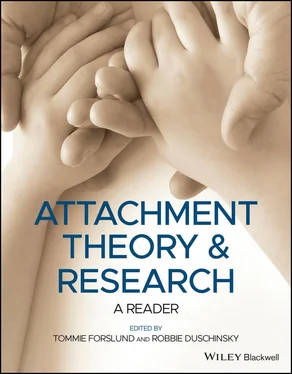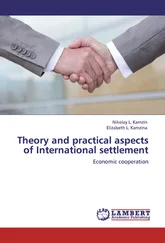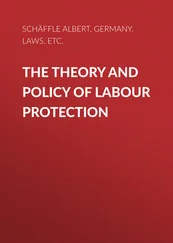It is to be noted that originally the theories of persecutory and depressive anxiety were advanced by Melanie Klein independently of the problem of separation anxiety; and that, moreover, persecutory and depressive anxieties are conceived by her as existing, initially at least, in very primitive form either from birth or from the earliest weeks. Their manifestations at a higher level of psychic organization, she holds, are to be understood as stemming from these primitive roots. I remain sceptical of this view. It is therefore necessary to emphasize that such formulations are not indispensable to the concepts of persecutory and depressive anxiety: there is no need for their role at a higher level of psychic organization to be conceived as stemming from more primitive roots. That they play an immensely important role in the more developed psychic organizations, not least in exacerbating separation anxiety and raising it to pathological levels, there can be no doubt. In this paper, therefore, persecutory and depressive anxieties will be treated as of major consequence in the elaboration of separation anxiety at a higher level of psychic organization, whilst leaving as an open question their existence and role at a more primitive level. 7
Primary Anxiety, Fright, and Anxiety Dependent on Learning
It is my belief that the theory of instinctual responses deriving from ethology and advanced in my previous paper permits a new approach. The heart of this theory is that the organism is provided with a repertoire of behaviour patterns, which are bred into it like the features of its anatomy and physiology, and which have become characteristic of its species because of their survival value to the species . Such, it was suggested, are many of the responses characteristic of the family life of Man, namely those mediating relationships between the sexes and between parents and young. This provides an instinct theory having much in common with Freud’s theory of part‐instincts and his notion of the ‘blind’ strivings of the id.
Before applying this theory to separation anxiety as the particular problem under examination, however, it is necessary to review the whole problem of anxiety and fear reactions afresh. In doing so four conditions will be delineated each of which, it is believed, although in essence very different from the others, contributes in a special way to our problem. These are primary anxiety, fright, conditioned anxiety, and expectant anxiety.
In grasping the theory to be advanced it is vital to distinguish sharply between the concept of self‐preservation and that of species survival: probably all biologists would regard the first, when conceived as an ‘instinct of self‐preservation’, as one of the most influential of misleading theories, the second as one of the most pregnant concepts in the history of biology. The notion of an instinct of self‐preservation posits a force or set of forces which is designed to ensure that a particular individual is preserved. The notion of species survival, which stems from evolution theory, points on the other hand to the fact that any biological character which is advantageous to the species tends to be perpetuated (through processes of natural selection and heredity), whilst any that are not so advantageous tend, over the course of generations, to be dropped out. It is true that often what is advantageous for the species is also advantageous for the individual; but there is no guarantee of identity of interest, and where they conflict it can be that it is the interests of the individual which go to the wall. That anatomical and physiological characteristics are subject to this rule has long been recognized. The conspicuous plumage of many birds, which is indispensable to their success in mating, may be most disadvantageous to their safety. The interests of individual survival are sacrificed; the interests of species propagation are paramount. That psychological characteristics are subject to the same law has, thanks largely to the superficial plausibility of the self‐preservation theory, been slow to be appreciated. Yet it is clear that all psychological characteristics which have been developed because of their species survival value must be so subject, and these must include any characteristics to which the term instinctual is applied. For these reasons, in discussing the theory of anxiety and fright reactions, no references will be made to the concept of self‐preservation. Instead we shall be thinking in terms of species‐specific behaviour patterns, or instinctual response systems as I prefer to call them, 8 which are present because of their survival value to the species and which operate, at least initially, in the blind and automatic way regarded by Freud as characteristic of the id.
In the previous paper I described some of the characteristics of what I termed instinctual response systems which are to be culled from the recent work of ethologists: ‘The basic model for instinctive behaviour is thus a unit comprising a species‐specific behaviour pattern (or instinctual response) governed by two complex mechanisms, one controlling its activation and the other its termination. Although sometimes to be observed active in isolation, in real life it is usual for a number of these responses to be linked together so that adaptive behavioural sequences result.’ I proceeded to consider ‘how as humans we experience the activation in ourselves of an instinctual response system’. When the system is active and free to reach termination, it seems, we experience an urge to action accompanied, as Lorenz (1950) has suggested, 9 by an emotional state peculiar to each response. There is an emotional experience peculiar to smiling and laughing, another peculiar to weeping, yet another to sexual foreplay, another again to temper. When, however, the response is not free to reach termination, our experience may be very different; we experience tension, unease, anxiety. It is this line of thought I wish to pursue.
The hypothesis advanced is that, whenever an instinctual response system is activated and is unable for any reason to reach termination, a form of anxiety results. The blockage may be of many different kinds. In some cases the environment may fail to provide the terminating conditions, as for example when there is sexual arousal in the absence of an appropriate partner. In other cases two or more instinctual responses may be active but incompatible, for example, attack and escape. In other cases again, the blockage may be associated with fear or guilt, or some deeper inhibition. No doubt the particular form of blockage will influence outcome; here, however, I wish to emphasize only the common feature. No matter what the nature of the blockage, it is postulated, if an instinctual response system is activated and unable to reach termination, changes occur both in behaviour (namely in psychological and physiological functioning) and also in the subjective experience of the individual himself. When it rises above a moderate level it gives rise to the subjective experience of anxiety. To distinguish it from other forms of anxiety I am terming it primary anxiety.
Whether in fact every kind of instinctual response system which is active and unable to reach termination is accompanied by primary anxiety needs further exploration. So too do the behavioural accompaniments of anxiety. Both the physiological and the psychological components seem likely to be in large part unlearnt and thus in some respects to resemble instinctual responses. The psychological components are of course of great consequence for psychoanalysts; since, however, they are intimately related to defence mechanisms, it will be best to postpone a discussion of them until a later paper.
Let us now consider fright . Fright, it is suggested, is the subjective experience accompanying at least two related instinctual response systems – those leading on the one hand to escape behaviour, and on the other to alert immobility or ‘freezing’. It is to be noted that as so defined it does not presuppose any conscious awareness of danger . Instead, it is conceived as being the accompaniment of certain instinctual response systems whenever they are activated. Like all instinctual response systems, those governing escape and ‘freezing’ are conceived as systems built into the organism and perpetuated by heredity because of their survival value. it is possible that there are more than two kinds of instinctual response systems associated with fright, but, since they do not form the subject of this paper, this possibility will not be explored. 10
Читать дальше












